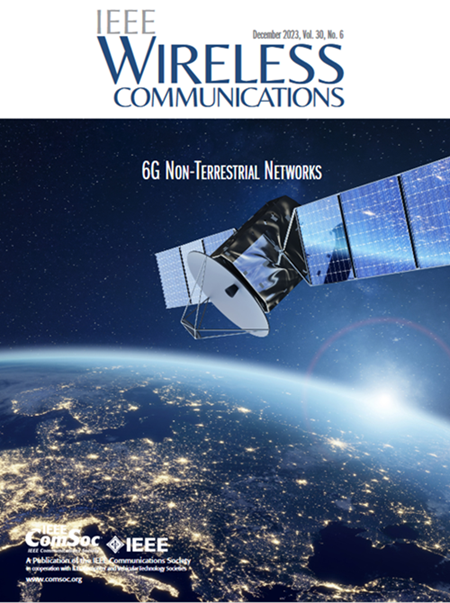下行链路无小区固定无线接入:体系结构、物理现实和研究机会
IF 10.9
1区 计算机科学
Q1 COMPUTER SCIENCE, HARDWARE & ARCHITECTURE
引用次数: 0
摘要
最近,一种新的无线接入模式,被称为无蜂窝大规模多输入多输出(MIMO),引起了人们的极大兴趣。它与传统的大规模MIMO辅助蜂窝网络的主要区别在于能够消除有害的小区间干扰(ICI),或者通过源自网络MIMO的多小区合作方法将ICI转换为预期信号的额外功率。然而,无小区接入的信息理论限制是以巨大的网络配置开销和高的MIMO处理复杂性为代价的。由于无线信道的动态性,为网络MIMO调用的全局信道状态信息(CSI)很快就会过时,从而导致性能下降。本文重点介绍固定无线接入(FWA)的无蜂窝实现,这是光纤到户(FTTP)的补充解决方案,后者的成本高得令人难以置信。特别地,我们讨论了无蜂窝FWA的集中化架构和信道特性,以及它们对不完美的CSI性能的共同影响。此外,基于测量的离线模拟表明,现实世界FWA信道的长相干时间(“准静态”)假设仅在完全静止的背景下有效,因此,它不应该用于FWA系统设计或性能分析。最后,我们在物理基础设施、数据处理和机器学习方面提出了无蜂窝FWA的新研究机会。本文章由计算机程序翻译,如有差异,请以英文原文为准。
Downlink Cell-Free Fixed Wireless Access: Architectures, Physical Realities, and Research Opportunities
Recently, a new paradigm of wireless access, termed as cell-free massive multiple-input multiple-output (MIMO), has drawn significant research interest. Its primary distinction from conventional massive MIMO aided cellular networks is the ability to eliminate the detrimental inter-cell interference (ICI), or to convert ICI, into extra power for the intended signal via a multi-cell cooperation approach originated from network MIMO. However, the information-theoretical limit of cell-free access is achieved at the expense of large network configuration overhead and high MIMO processing complexity. Because of the dynamic nature of wireless channels, the global channel state information (CSI) invoked for network MIMO quickly becomes outdated, leading to performance degradation. This article focuses on the cell-free implementation of fixed wireless access (FWA), a complementary solution to fiber-to-the-premise (FTTP) where the latter is prohibitively expensive. In particular, we discuss the centralization architectures and channel characteristics of cell-free FWA, as well as their joint implications on imperfect CSI performance. Moreover, measurement-based offline simulations show that the long coherence time (‘quasi-static’) assumption of real-world FWA channels is only valid against a completely motionless background, and, thus, it should not be used in FWA system design or performance analysis. Finally, we present new research opportunities for cell-free FWA in terms of physical infrastructure, data processing, and machine learning.
求助全文
通过发布文献求助,成功后即可免费获取论文全文。
去求助
来源期刊

IEEE Wireless Communications
工程技术-电信学
CiteScore
24.20
自引率
1.60%
发文量
183
审稿时长
6-12 weeks
期刊介绍:
IEEE Wireless Communications is tailored for professionals within the communications and networking communities. It addresses technical and policy issues associated with personalized, location-independent communications across various media and protocol layers. Encompassing both wired and wireless communications, the magazine explores the intersection of computing, the mobility of individuals, communicating devices, and personalized services.
Every issue of this interdisciplinary publication presents high-quality articles delving into the revolutionary technological advances in personal, location-independent communications, and computing. IEEE Wireless Communications provides an insightful platform for individuals engaged in these dynamic fields, offering in-depth coverage of significant developments in the realm of communication technology.
 求助内容:
求助内容: 应助结果提醒方式:
应助结果提醒方式:


